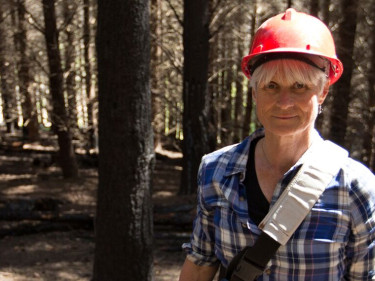In New Zealand, fire is commonly used for land clearing and for disease control in agricultural or horticultural industries. While it is a valuable tool, using fire comes with risk.
Knowing how to use fire safely will reduce the risk to life, property and the environment.
Fire and Emergency New Zealand provides free advice and guidance to help landowners complete controlled burns safely. However, the person who lights a fire is always responsible for ensuring the fire remains safe, does not escape and is completely extinguished.
The Safely using fire for land management guide provides an overview for using fire as a land management tool. It will help landowners:
- understand the key stages in safe use of fire as a management tool
- identify the risks and considerations that need to be managed.
These guides are developed and updated with support from the SCION research program, the Forest Owners Association, Department of Conservation and Federated Farmers.
Land clearing burns
The Land clearing burns guide provides further detail on how to safely prepare for and complete controlled burns of scrub or other vegetation. These burns are commonly used to prepare land for conversion, e.g. scrub to grass.
The Prescribed burn plan template can be used to ensure all factors have been considered when planning your burn. ‘Prescribed burning’ is an internationally recognised term for controlled burning to achieve planned objectives. A ‘prescribed burn plan’ contains a map identifying the area to be burnt and includes the specifications and conditions under which the burn is to be conducted.
The Working safely at vegetation fires guide was developed to prepare rural firefighters to work safely at vegetation fires. This is a useful resource for people planning land clearing fires as it gives an overview on:
- how fires burn
- fire behaviours
- hazards and survival
- protecting yourself and others.
Crop residue or stubble burns
The Crop residue or stubble burns guide provides guidance on how to safely prepare for and complete controlled burns of crop residue, which is plant waste material left in the paddock after harvest. These burns are used to prepare land for replanting crops.
Using fire for disease control
Plant and animal pests and diseases present biosecurity risks that can lead to unwanted impacts to the economy, environment, human health or social or cultural values.
The consequences of a biosecurity incursion will vary depending on the nature of the disease, the plants, animals or specific environment affected, and the ability to disperse within New Zealand.
During a disease control or eradication response, fire may be a suitable method to eliminate disease. The use of fire will be a case-by-case decision made by investigative experts who are knowledgeable about the disease in question. This could range from the vet you have called in to investigate the sudden death of one of your herd, to experts involved in a large-scale biosecurity response being managed by the Ministry for Primary Industries (MPI).
Fire and Emergency can advise on the correct and safe use of fire in these circumstances. For MPI-managed responses, a senior Fire and Emergency advisor will be involved in the incident management team and will manage the use of fire.
Depending on the circumstances and the type of fire to be used for control or eradication, we can issue a fire permit during a restricted fire season. Fire and Emergency can also issue a fire permit during a prohibited fire season if:
- it is necessary to prevent, reduce, or overcome any hazard to life or because of any other serious emergency or
- weather or other conditions have temporarily reduced the fire hazard making it apparently safe to light a fire.




